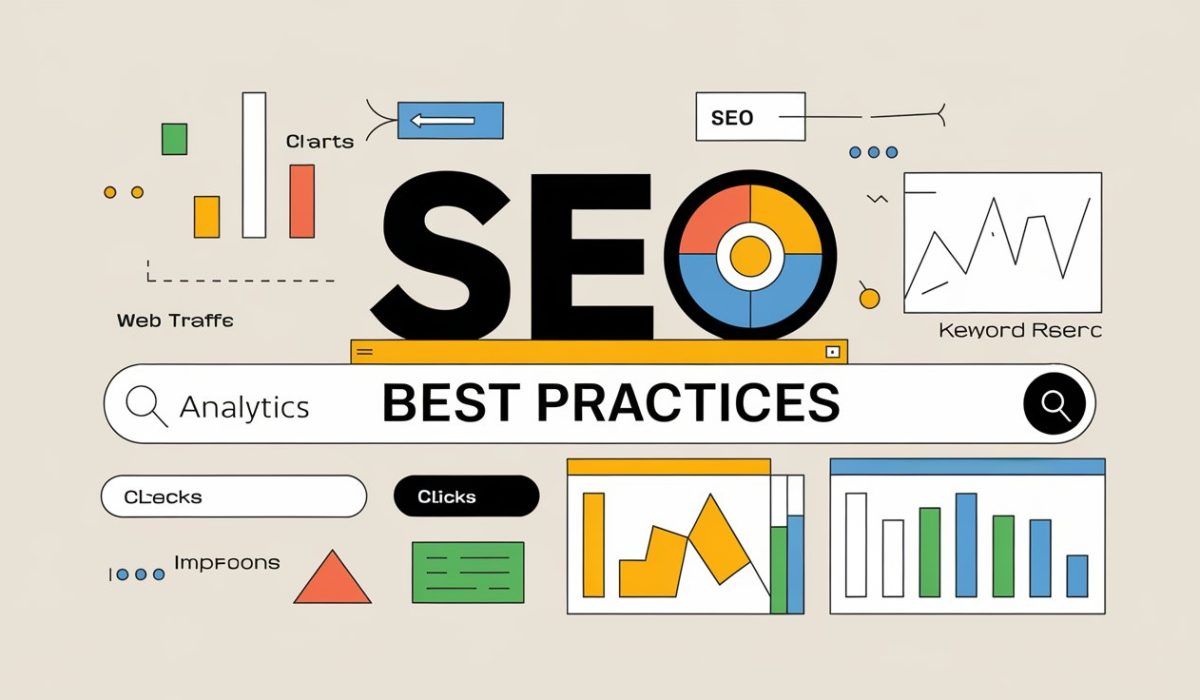SEO Best Practices
Search Engine Optimization (SEO) is essential for improving your website’s visibility and driving organic traffic. Following SEO best practices ensures that your content ranks higher on search engine result pages (SERPs), leading to increased exposure and engagement. Here’s a guide to help you implement effective SEO strategies.
1. Conduct Keyword Research
Keyword research is the foundation of SEO. Here’s how to find the right keywords:
- Use Tools: Utilize tools like Google Keyword Planner, Ahrefs, or SEMrush to discover relevant keywords for your niche.
- Target Long-Tail Keywords: Focus on long-tail keywords with lower competition but high search intent.
- Analyze Competitors: Study what keywords your competitors are ranking for and find opportunities to target similar terms.
Choosing the right keywords helps your content rank for terms your target audience is actively searching for.
2. Optimize On-Page Elements
On-page SEO refers to optimizing individual pages to rank higher and earn more traffic. Focus on the following elements:
- Title Tags: Include your primary keyword in the title, and keep it under 60 characters to ensure it displays fully on SERPs.
- Meta Descriptions: Write compelling meta descriptions with relevant keywords, keeping them under 160 characters to improve click-through rates.
- Header Tags (H1, H2, H3): Organize your content with header tags and include keywords naturally.
- URL Structure: Create SEO-friendly URLs by keeping them short and including your target keyword.
On-page optimization improves search engine crawlability and user experience.
3. Create High-Quality Content
Content quality plays a major role in SEO rankings. Here’s how to create SEO-friendly content:
- Answer User Intent: Ensure your content satisfies what users are searching for by providing valuable, informative, and relevant information.
- Use Keywords Naturally: Avoid keyword stuffing and incorporate your keywords naturally throughout the content.
- Keep Content Fresh: Regularly update your content to maintain its relevance and accuracy.
- Create Engaging, Readable Content: Use short paragraphs, bullet points, and visuals to make your content easy to read and engaging for users.
Search engines prioritize high-quality content that provides value to users, improving your ranking.
4. Improve Page Load Speed
Page speed is a critical ranking factor for SEO. To enhance your site’s load time:
- Optimize Images: Compress images without sacrificing quality to reduce page load times.
- Minify CSS, JavaScript, and HTML: Remove unnecessary code to improve speed.
- Use a Content Delivery Network (CDN): A CDN helps deliver content faster by using servers closer to the user’s location.
- Enable Browser Caching: Store cached versions of your site to reduce load time for returning visitors.
A faster website improves user experience and can boost your rankings.
5. Optimize for Mobile Devices
With the majority of searches happening on mobile devices, it’s important to ensure your site is mobile-friendly:
- Responsive Design: Implement a responsive design that adjusts to different screen sizes.
- Mobile Usability: Ensure that buttons, menus, and images are easily accessible on mobile devices.
- Optimize Mobile Speed: Use Google’s Mobile-Friendly Test to check and improve your mobile page performance.
Mobile optimization helps your site rank better on mobile searches and provides a seamless experience for users.
6. Build Quality Backlinks
Backlinks, or external links pointing to your website, are a crucial ranking factor:
- Guest Blogging: Write guest posts on reputable sites in your industry to earn backlinks.
- Create Shareable Content: Produce high-quality content, such as infographics or detailed guides, that other websites will want to link to.
- Outreach: Reach out to industry influencers or websites that might find your content valuable and request backlinks.
High-quality backlinks signal to search engines that your site is authoritative, improving your rankings.
7. Use Internal Linking
Internal linking helps search engines understand the structure of your site and improves navigation:
- Link to Relevant Pages: Include internal links to other relevant content within your website.
- Use Descriptive Anchor Text: Ensure the anchor text is relevant to the page being linked to.
- Link Deeply: Don’t just link to your homepage or main sections—link to deeper, relevant pages.
Internal links help search engines crawl your site efficiently and keep users engaged with your content.
8. Focus on User Experience (UX)
User experience is becoming a crucial ranking factor. To improve UX:
- Reduce Bounce Rates: Create engaging content that keeps visitors on your page longer.
- Improve Navigation: Ensure your website is easy to navigate, with clear menus and a logical structure.
- Ensure Readability: Use clear fonts, ample white space, and a readable color scheme to enhance readability.
A positive user experience encourages visitors to stay longer, improving your site’s engagement metrics and SEO.
Conclusion
By following these SEO best practices—conducting thorough keyword research, optimizing on-page elements, creating high-quality content, improving site speed, optimizing for mobile, building quality backlinks, utilizing internal linking, and focusing on user experience—you can significantly improve your website’s search engine ranking. Consistently applying these strategies will help your site attract more organic traffic, leading to greater visibility and success.
